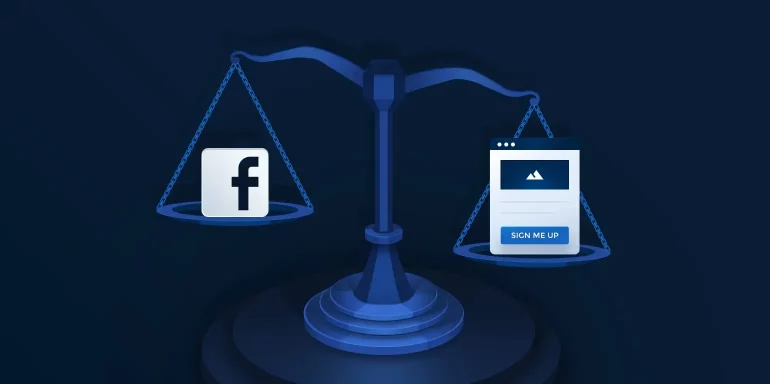In case you haven’t heard, many marketers are getting excited over the development of Facebook “Lead Ads,” the new way for brands to generate leads directly on the platform. Even though they have yet to be released to the public, there’s a lot to be concerned about.
With this new ad format, mobile users will be able to submit their personal information with two simple taps of a button (shown below). It’s made possible by a form that pre-populates information that Facebook captures when you fill out your profile (e.g. email and phone number).
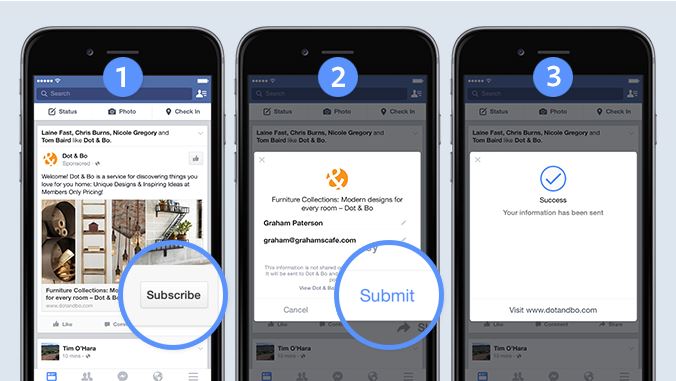
While this opens up a whole new realm of possibilities for businesses, it can also leave some serious holes in your marketing strategy that we think can be solved by continuing to use traditional landing pages.
Here’s why you should think twice before using Facebook lead ads:
1. People will likely be more comfortable filling out a landing page form, not Facebook lead ads.
As one of the most recognized companies in the world, Facebook already has the advantage of being a household name. Brand awareness on a scale like this adds a lot of credibility in the minds of its users. But at the same time, Facebook’s privacy policy has garnered a lot of attention over the years – and not the good kind.
A 2013 poll found that Americans trusted Facebook less than the NSA to protect their personal data. In addition, last year a survey taken by CNBC found that Facebook was the most feared tech company in regard to personal data collection, with polled users trusting it over two times less than Google, and almost 7 times less than Apple.
And recently things haven’t gotten much better for the world’s biggest social network. From fears that the company eavesdrops on your conversations to deliver more targeted advertisements, to questions over whether it knows you better than even your closest friend, Facebook paranoia is getting higher and higher with seemingly each passing day. In fact, just last month two Harvard undergraduates released a study claiming that Facebook’s privacy policy is the worst it’s ever been, and users are sharing less personal data than ever before.
Knowing all of that, can we say that a form with pre-populated personal information is going to sit well with Facebook users? A form that effectively says to people, “Hey, just a reminder, we have all this information about you ready to send off to our third-party advertisers.”
Not confidently, but only time will tell.
2. Generating quality leads is about building trust. That starts on YOUR landing page.
Getting users to offer up their personal information voluntarily was the first step. Then, they created one of the most advanced advertising tools in the world. And with recent additions like the “Buy” button, “Instant Articles,” and now “Lead Ads,” Facebook is trying to keep its users from ever having to leave the site.
At first glance, that might seem like a good thing – all of these projects have the potential to ease buyer frustrations, like:
- Slow page load times
- Hesitance to click a link that takes them off Facebook
- Confusion due to a poorly-designed landing page
- Destination website’s lack of credibility
But what are the implications for brands here?
Well, we all know that trust and authority are both key factors that drive consumer decisions – and these days, both of those thing are built on your website. Consistency in style, voice, design, and customer service help build trust. Valuable, informative, and educational content helps build authority.
If Facebook users are submitting their personal information through the platform itself, without engaging with the content on your site, they’re making a decision based on a small snapshot of your brand they’ve seen in a Facebook lead ad. Ultimately, it’s an uninformed decision, and it may result in an unsubscribe from whatever it was they signed up for in the first place.
In contrast, running an ad to drive users to a landing page where you have the opportunity to explain your your unique value proposition, and validate why the user clicked through, is a much more effective way to inform them before they submit their information. These ads can be targeted to fans of your brand on Facebook, or even people who have never engaged with it before. The power of an informative landing page to produce high-quality leads is much stronger than any short-copy Facebook lead ad.
3. Facebook lead ads will likely be lower quality.
The easier you make it for visitors to fill out your form, the higher the conversion rate you will enjoy. When you make submitting personal information as easy as “tap, tap, done,” you skip the process of convincing a user to sign up with carefully crafted copy & well-thought-out form fields, and head straight to collecting data.
Now, if your goal is to collect as many leads as possible, that’s not necessarily a bad thing. People will much more readily hand over their name and email before anything else. But if you…
- Don’t have a large enough sales team to call and qualify an abundance of leads
- Don’t have the time to team to separate the good leads from the bad
… then you should probably consider using your own custom form, and adding fields that are relevant to your business that will take some effort on the part of the prospect to complete. That way, you eliminate the people who are actually interested in your product or service from the ones who are casually browsing with no real conversion intent.
By doing this, you ensure the leads you get are higher quality, and your team will need to spend less time trying to figure out which to pursue and which to abandon.
4. You can A/B test landing pages, but not Facebook lead ads.
Okay, so this isn’t 100% true. You can A/B test these ads…but to what extent really? You can change the copy of your ad, the photo, and maybe the form fields, but you’re not going to be able to reach the level of optimization you would with a custom landing page.
Some elements you’ll want to test, but likely can’t:
CTA’s
If previous ads are any indication, Facebook is likely to provide you some pre-written CTA buttons to choose from. Things like “Subscribe” or “Request more info” will likely be popular options used by many brands.
But who wants to use those boring examples when we know that CTA’s written in the first person perform best? Why should you choose from a handful of unremarkable ones if you can create your own insanely good CTA on a custom landing page?
The team at Copyblogger was able to boost conversions by 24% simply by changing their copy from “Try Schedulicity Free” to “End My Scheduling Hassles,” but you likely won’t have the flexibility to make such changes in a Facebook ad.
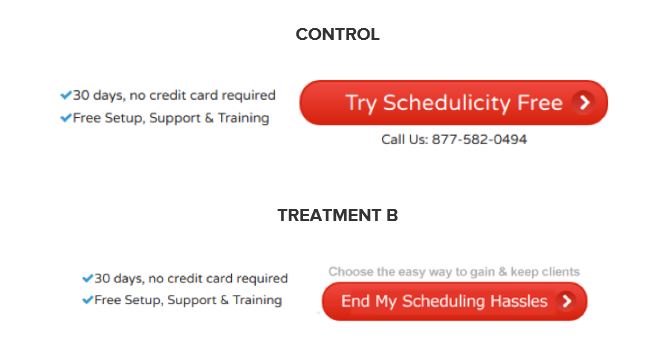
Alternate page layouts
What happens if you move your CTA button a little to the left? How about moving it farther below the fold? Tests like these can make a big difference in your conversions, and they just won’t be possible with a simple cookie-cutter lead ad.
Don’t believe us? By changing our webinar registration page layout from variation B:
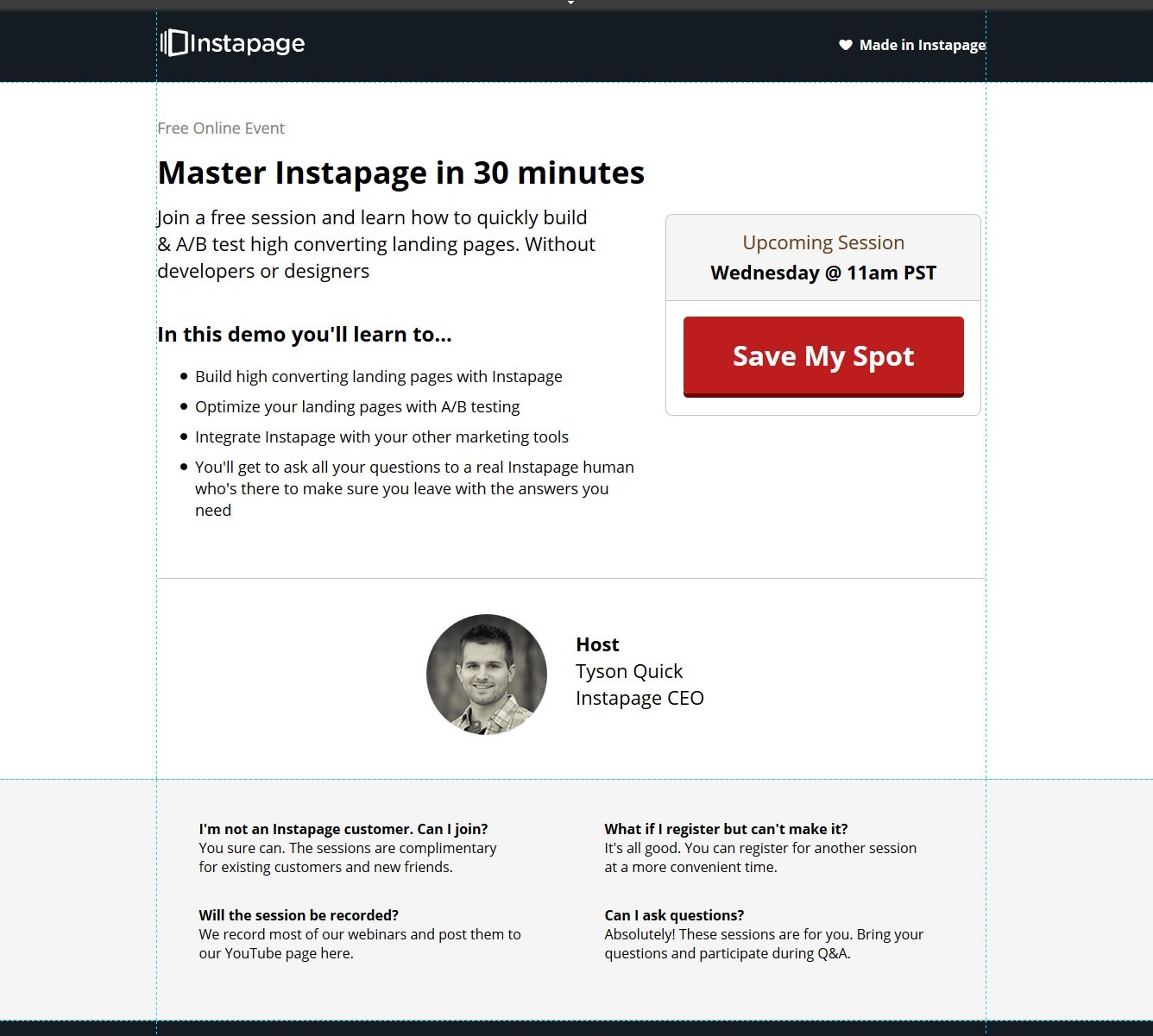
To variation C:
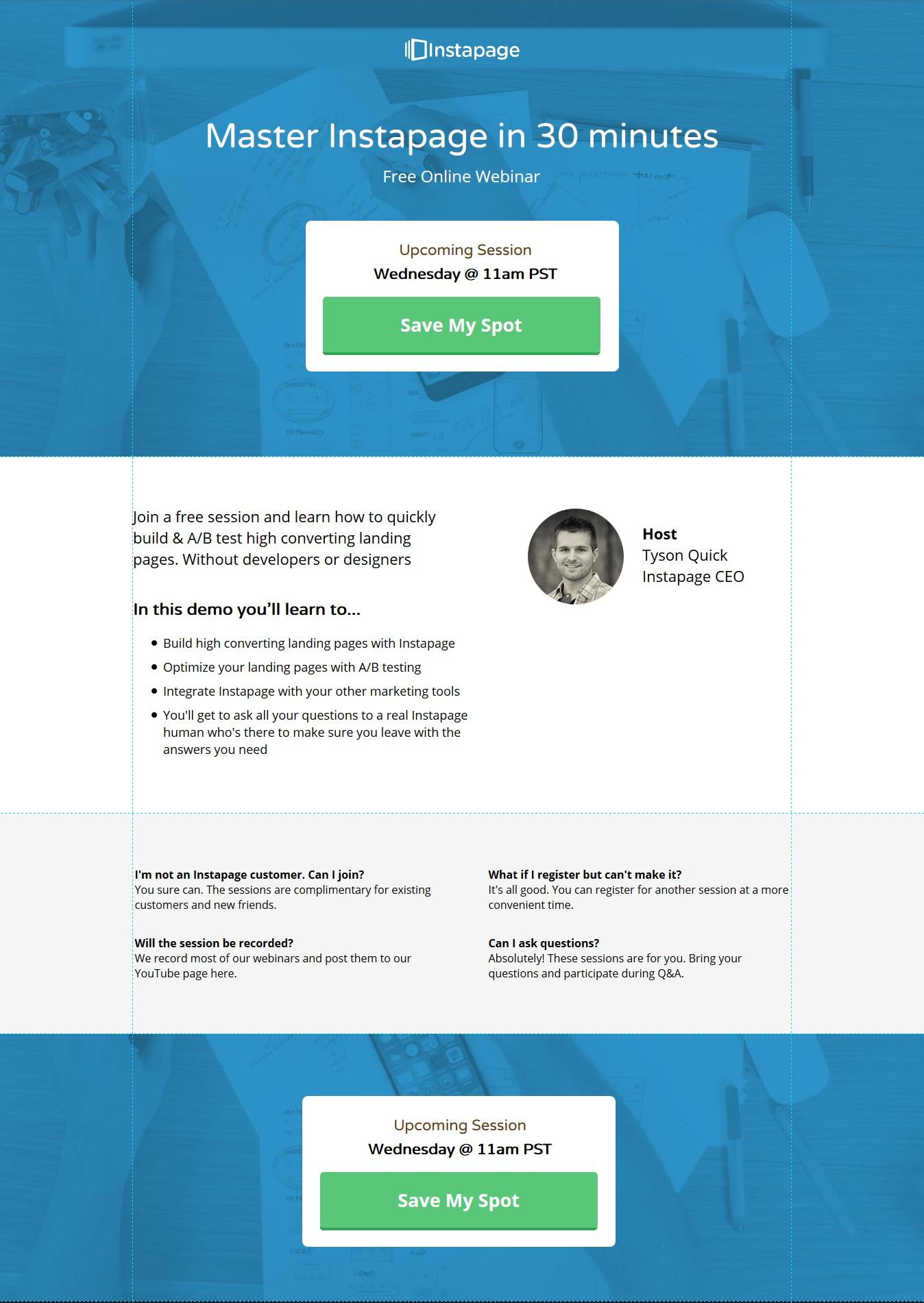
We boosted webinar sign-ups by 129%!
Colors
Color can have a major effect on user action. When Dmix tested a green CTA button against a red button, the test revealed that the lattter increased conversions by 34%:

With all Facebook buttons currently branded company colors, this is a test you won’t be able to run.
5. Ad creative content will be limited with Facebook lead ads.
It’s unclear the type of content this new ad format will support, but if we use Facebook’s current ad types as the example, it raises some questions about limitations:
- What if your most persuasive piece of content is an infographic that you can’t post in your ad because of Facebook’s 20% text rule?
- What if you want to include customer testimonials in your ad but can’t make the character cut-off?
- What if you want to feature an informative webinar or viral brand video in your ad, but are restricted to using a simple photo?
- What if you want to offer an ebook or a whitepaper, but can’t because Facebook ads don’t have the capacity to offer downloads?
These are all problems you could potentially experience with Facebook lead ads that you won’t with a custom landing page.
6. Facebook lead ads can’t collect some very valuable information.
With Facebook lead ads, you’ll be able to capture basic user information such as name, email, address, country, etc.
That’s all well and good, but what if your business needs more data to qualify leads? What if, say…
- You’re in the online education business and you can’t serve anyone without a high school diploma?
- You’re a life insurance agency that needs to know whether or not a prospect already has a policy?
- You offer a pet grooming service and you have to find out whether your lead has a dog at home?
How useful is the basic information if leads are not qualified for your service?
With a traditional landing page and custom form, you can qualify leads much more effectively.
7. You won’t be able to include these leads in website custom audiences.
If you’re not familiar with website custom audiences, we highly recommend you check them out. They’re probably the most qualified segments you can target on Facebook. These are people who have visited particular pages of your website during a date range that you specify. They’re people who have shown interest in your business, and they should be followed up with on Facebook.
Now, do we see an issue with Facebook lead ads here?
Well, serving lead ads to audiences that have visited your website is a great idea. It’s another way for you to capture information from prospects who have left your site without taking action. However, if you’re targeting Facebook fans, or another segment of people who haven’t visited your website, then you’re doing it wrong.
Remember – the ultimate goal is always to get people to your website – that’s where you build trust, authority, and convert prospects into buyers. As Facebook advertising guru Jon Loomer so expertly pointed out, if you’re not using a “website click” ad to drive people to a landing page, then you can’t include them in valuable website custom audiences in the future.
What will you choose to do?
It’s anybody’s guess as to when the public finally gets to test lead ads for themselves. Right now they’re only available to a select few businesses. But one thing’s for sure – when they do become available for all of us, they’ll have some serious upsides if used correctly, and equally severe downsides if used poorly.
Always connect all your ads to personalized landing pages to lower your cost per customer acquisition. Start creating your dedicated pages by signing up for an Instapage 14-day free trial today.

Try the world's most advanced landing page platform with a risk-free trial.
